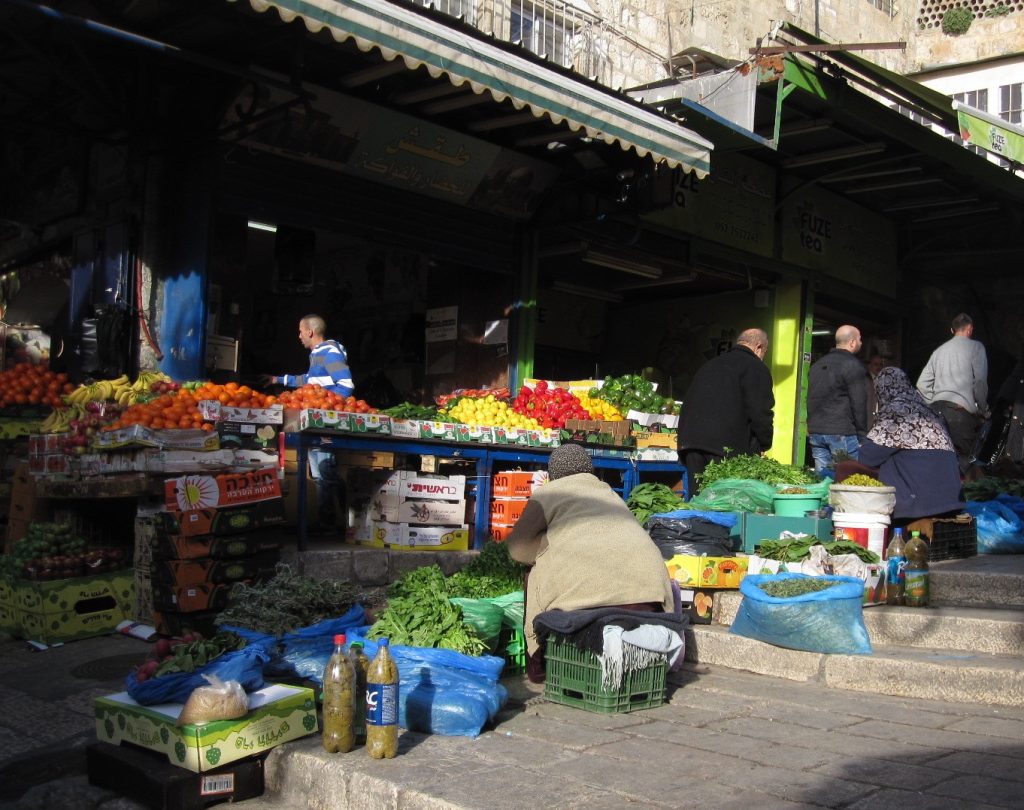Are you being served more than meets the eye?
Justice & Advocacy
“Shawarma is from the Arab-Middle East region, but a recent major tour company promotion described the shawarma as an Israeli delicacy. This is a far cry from the friendly tussle between Australia and New Zealand over pavlova!” says Helen Rainger, General Synod member and President of the Palestine Israel Ecumenical Network

I remember eating shawarma while in Gaza (now strongly blockaded) and Bethlehem several years ago…thoughts of this delicious food bring back other memories of my time in the region.
But first, some culinary details. The tasty and healthy shawarma consists of layers of thinly sliced meat or chicken compacted and grilled vertically on a rotisserie. This is served with fresh pita bread and a variety of vegetables and salad. There are many restaurants around Queensland where you can find great shawarma, or, if you enjoy a challenge in the kitchen, you can try and replicate the dish at home using one of the countless online recipes that promise readers an “authentic” shawarma meal.
Advertisement
After a busy day walking around and meeting Palestinian locals, imagine then how welcome this lunch was in Gaza. When I think about this time, I recall other powerful memories of this troubled place. Bethlehem was a different context, but the tastes of that special city also linger.
When it comes to the subject of tourism in the region, food can become political. Tour companies advertise “the tastes of the Middle East”, specifically using food to entice us to visit the Middle East…and then comes the problem.
Although countries such as Jordan are also mentioned, it is Israel that typically becomes the focus in tour company promotions. Palestine is rarely mentioned. With 15 May this year marking the 75th anniversary of the Nakba, or “catastrophe” — when dozens of massacres occurred and hundreds of thousands of Palestinian people were evicted from their ancestral homelands in 1948 during the State of Israel’s establishment — it is worth exploring just how Palestine fits into our overall understanding of the region and how Palestinian culture is represented to tourists.
Advertisement
Shawarma is from the Arab-Middle East region, but a recent major tour company promotion described the shawarma as an Israeli delicacy. This is a far cry from the friendly tussle between Australia and New Zealand over pavlova!
“Two cultures may live side by side without one being subjugated to the other” is a good line I heard on the radio yesterday. But when one culture is commandeered to the point that it is almost made to disappear, then terms such as “cultural appropriation” seem apt.
Beyond considerations of “foodie tourism”, the same major tour company promotion erroneously described Bethlehem as being in Israel. This is a common thread in tour promotions:
“From the ancient cities of Bethlehem and Jerusalem…discover for yourself why millions of Israelis proudly call this country home.”
The birth place of Jesus is located in Palestine.
Refreshingly, in the details of a “Classic Israel” tour, the same company did acknowledge a truer picture: “From here, it’s on to Bethlehem, located in the Palestinian territory, where lunch showcases local delicacies.”
Another company keeps the Israel destination intact and then says: “We continue to Bethlehem, the Biblical birthplace of Jesus,” thus locating Bethlehem in Israel. Maps used by various companies often show the whole of Palestine and Israel as being Israel, with Bethlehem clearly marked.

A Palestinian market stall in the Old City of Hebron
I refer to “Palestine” when describing the location of Bethlehem, but some balk at this. You may know that Palestine has observer status at the United Nations, but is yet to be recognised by many countries. Groups like the Palestine Israel Ecumenical Network are actively working to see the Australian Parliament officially recognise Palestine. Meanwhile, following the United Nations, the term “Palestine” is valid.
Meanwhile, the Occupied Palestinian Territory (OPT) continues to be an accepted term. Words matter because if words cover over one part of the Palestinian story, they can also hide other current problems in that “Holy Land”. These problems also are where my memories of food take me — to the plight of children who are being taken from their homes in night raids and held in often long-term detention, and to the Separation Wall, which the Israeli Government began 20 years ago to separate many Palestinians from their land and to annex large swathes of Palestinian land.
Related Story
 Reflections
Reflections
Whom, or what, do we worship?
A final comment about the word “Jerusalem”, as used in tour itineraries and elsewhere. The following line in one tour advertisement has many layers to unpack: “Israel is a timeless yet refreshingly authentic destination.”
For any tour of Israel to be “authentic”, tour participants should be told a little history. Taking Jerusalem as an example, people should be told that East Jerusalem, a Palestinian area, was occupied and later annexed by Israel and that the claim of a unified Jerusalem is a contested one. It is interesting that photos accompanying tour promotions of Israel often feature the golden orb of the Dome of the Rock, a spectacular site in East Jerusalem with a long history and today used by the Palestinian people as a symbol of their presence in the Old City of East Jerusalem.
So, I encourage you to visit Palestine and Israel. Taste the food, see the magnificent sights and soak up the spectacular atmosphere the region has to offer…but when choosing with whom to travel, look closely at the descriptions and geography given. And, before and during your travel experience, ask some questions to learn the full context of what you are encountering.





